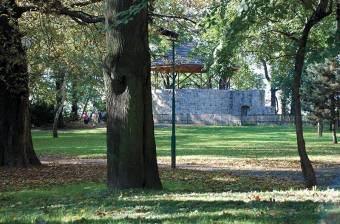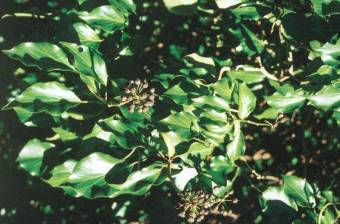Nature-Landscape Complex
IVIES ON CASTLE HILL
It comprises the area of the south-west slope of the Castle Hill, from the side of the Olza. The area: 0,4 ha. The complex was set up to protect a rich location of ivy with numerous flowering specimens. In the past those grounds were devoid of flora and it was only in the second half of the XIXth century that it was turned into a fragment with the characteristics of a park – with paths, planted trees, etc. Even today one can still see the traces and lines of the old paths and low walls that bordered them.
Practically the whole slope is covered with black locust (a so-called acacia), maple and hedge maple, and also with bushes, mainly elder, and the undergrowth of the above mentioned species of trees. The most valuable element of this area is ivy, which is, at places, the dominant species in the undergrowth. It is legally preserved. There are flowering specimens of ivy on about 40 trees. The thickest ivy shoot was 12cm in diameter, then – 8cm (one shoot) and 4/5cm (a few shoots). The occurrence of single specimens of arums (Arum alpinum) in the undergrowth is also interesting. One of the greatest threats to the trees is the unstable breeding-ground, of soft, loose soil; the roots of the trees cannot develop well enough to be able to resist the snowfalls or strong winds, which often results in trees falling down.












